What the fire near Saddleworth Moor means for wildlife
- Published
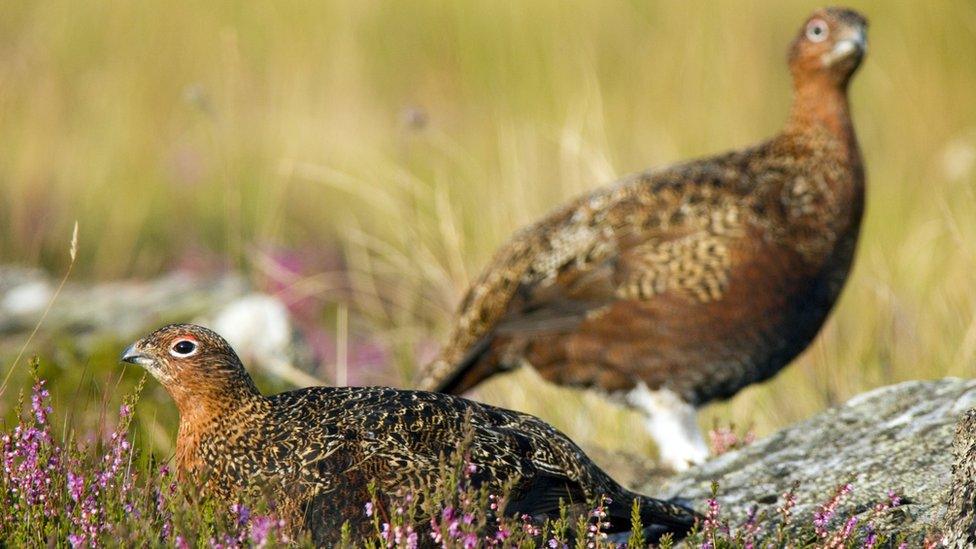
It is currently the nesting season for red grouse
The fire near Saddleworth Moor now spans over seven square miles, and local residents have been evacuated from some of the worst affected areas.
But what does it mean for the wildlife that rely on the moor?
"It couldn't have happened at a worse time," says David Hunt, an Upland Conservation Officer with the RSPB.
"This time of year we're in the middle of the bird breeding season. So ground nesting birds will inevitably have been affected.
"You could potentially still have birds on eggs. Although it's starting to get quite late; some smaller birds might be on second clutches," he told BBC News.
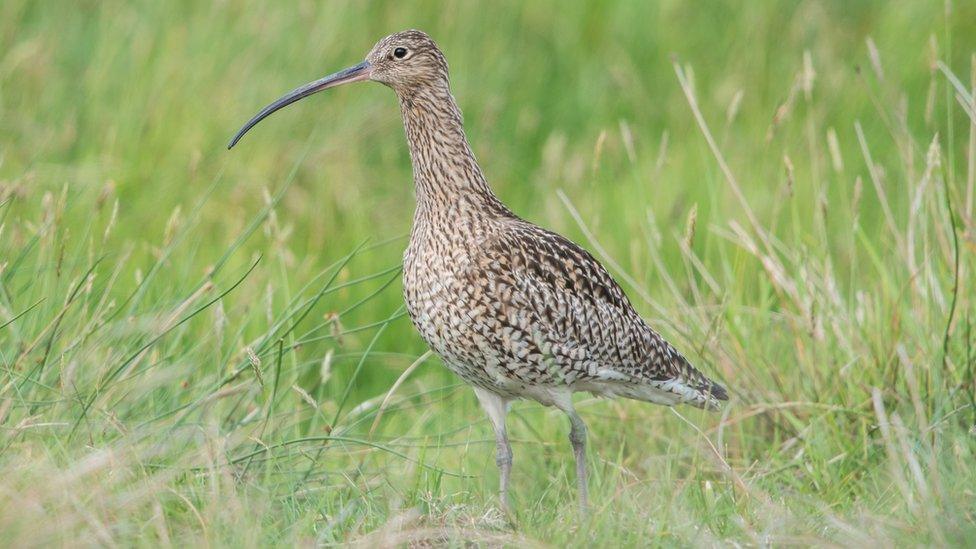
Ground nesting wading birds like curlews are thought to be at risk
The RSPB's Dove Stone site is home to an internationally important population of wading birds, including curlews, golden plover and lapwings.
Other ground-nesting birds like meadow pipits and skylarks are likely to have young chicks.
"The time of year, particularly with this weather, there'll be a lot of birds hatching and young birds finding their feet," explained Mr Hunt.
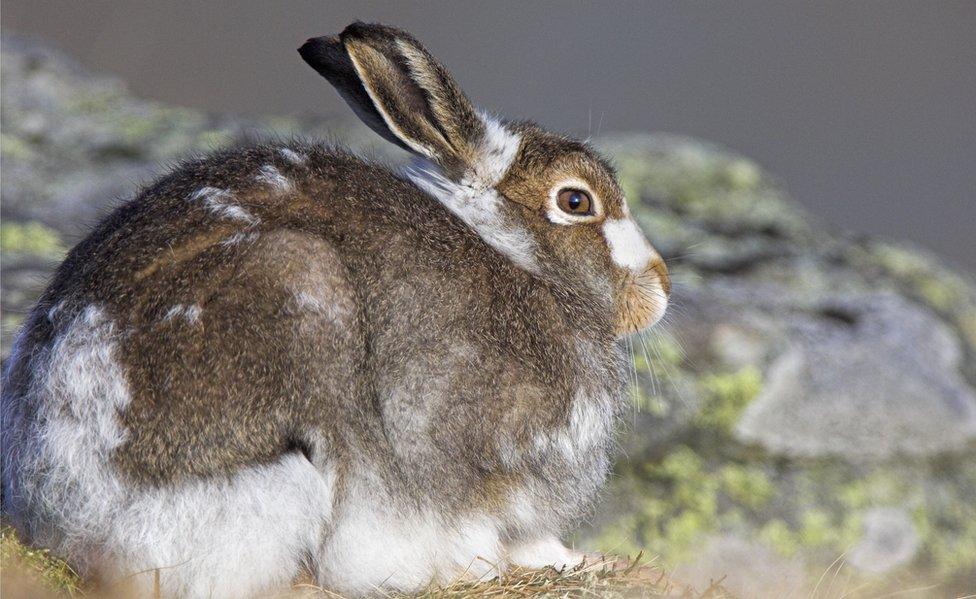
Mountain hares may have had the speed to flee the fire
The region also has a small introduced population of mountain hares. Conservationists hope that they would have been able to flee the fire, but their ecosystem may not be the same when they return.
"That's quite a rare species in this country," said Tim Mitcham, head of conservation at The Wildlife Trust for Lancashire, Manchester & North Merseyside.
"It'll be a real shame if that's been a kiss of death to that community."
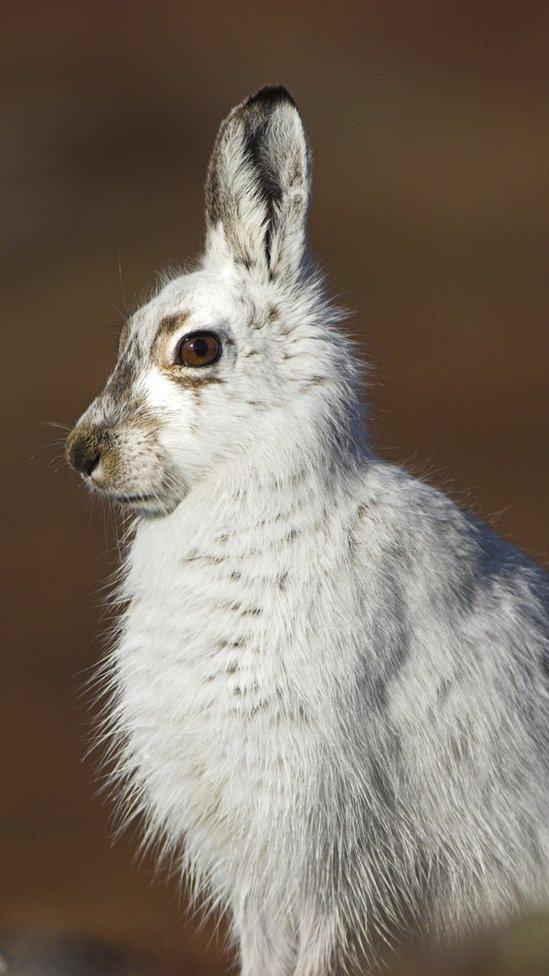
The depth at which the fire is burning has likely "cooked" any seeds, worms and small insects in the soil, Mr Mitcham added.
Being hungry for oxygen, [the fire] could suffocate animals like voles which can burrow deep enough to escape the worst of the heat.
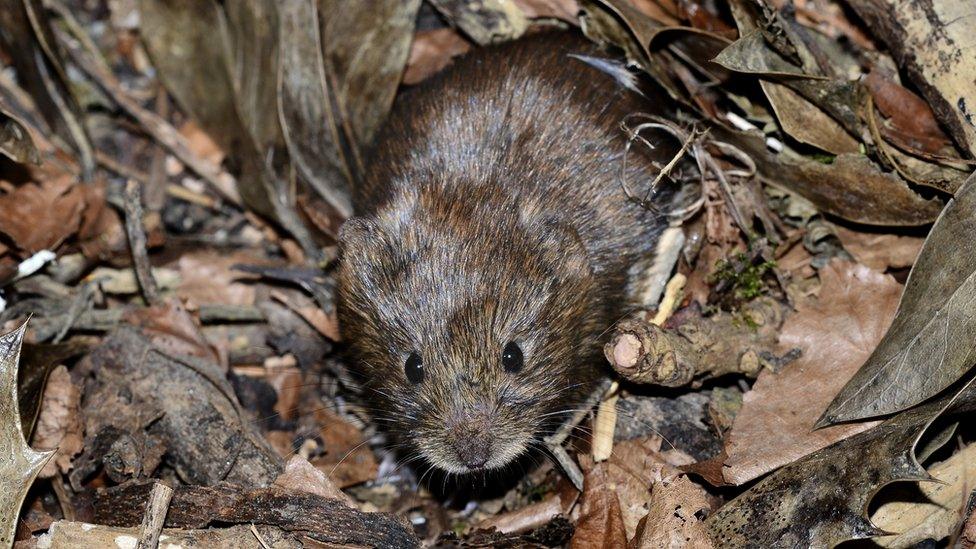
Insects, explains Mr Mitcham, are the root of the ecosystem.
"The moorland is a mosaic of different sorts of wildlife communities," he told the BBC.
"You get larger animals eating insects. Curlews, meadow pip, red shank - all these things depend upon insects and crustaceans that will be in these specialist mosaics of bog."

Many animals, like skylarks, rely on insects for food
"When the fires come through it takes quite a long time for the vegetation to come back. It's really the base of the food chain. It's only really when you get vegetation back again that you have the insects thriving.
"It's going to take a long time for it to re-establish. It might start to green up within a couple of years. But in terms of building up this amazing diversity of animals and food chain, it will take much longer."
If a large area is devastated, lack of food could force birds to raise smaller broods, putting a dent in the population for several years to come.
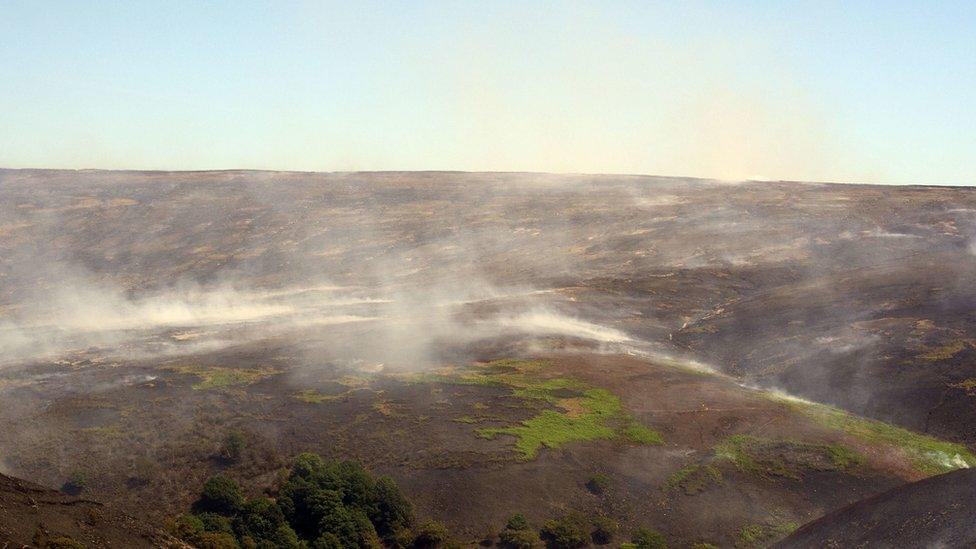
The fire's full impact will not be clear until it is extinguished, and teams can safely access the site, Mr Hunt said.
"Peat smoulders. That's going to be the key challenge. It may well take some time to ensure the peat isn't smouldering. Then the first step will be to do an assessment of the habitat," he told the BBC.
"We don't really know what the final picture is going to look like. Hopefully, the impacts aren't as bad as we fear. We're just going to have to wait and see."